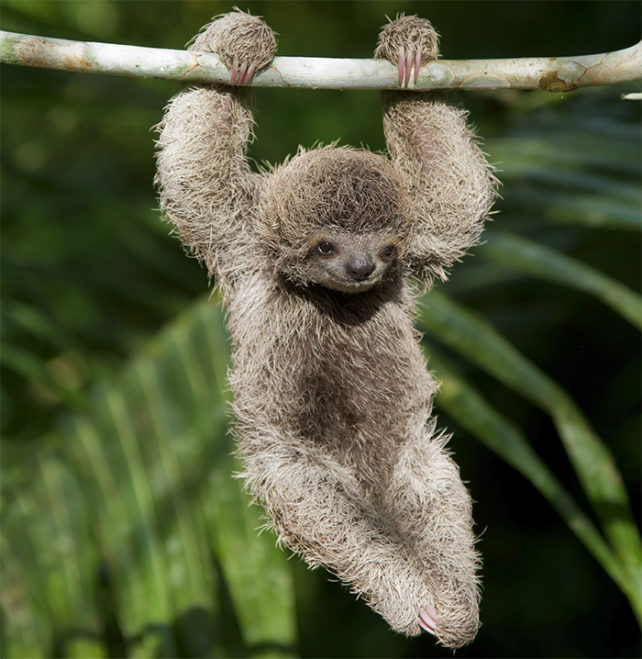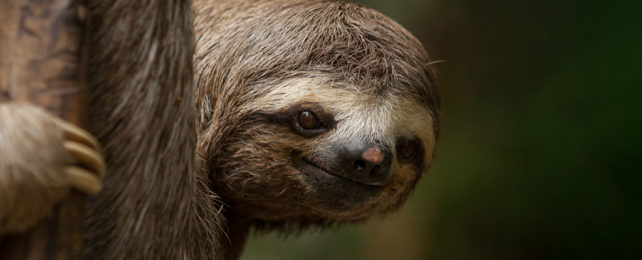Sloths are surprisingly stronger than their adorably dopey expressions suggest, which makes sense given they live their lives dangling from trees literally by their bony fingernails.
Puzzlingly, in spite of using all four limbs to grip onto branches, sloths seem to be extra strong on their left side compared to their right. New York Institute of Technology anatomist Melody Young and colleagues discovered this in the first ever attempts to accurately measure the strength of a brown-throated three-toed sloth.
Very few mammals are shaped for a life spent almost exclusively in the canopy, especially those existing on just leaves. Quite frankly, while you'd have no shortage of food, extracting enough nutrients from the fibrous plant material is hard going.
Many mammalian folivores (leaf eaters) like giraffes and moose, get around this problem by utilizing a large digestive system. Not all mammals can afford to bulk up in ways that help process the tough, nutrient-poor plant materials, though. Other mammals, like the koala, make do with that they can get and avoid wasting precious energy by chilling out among the branches.
Similarly, the sloth's elongated bone-claws give them a way to hold strong without wasting mass and energy on muscle power. According to this new study, the grip strength behind this slow dangle is exceptional for the job.
It takes two researchers to pry off a sloth that's hugging a third, Young told New Scientist; one researcher for each leg. And there are some reports of sloths continuing to cling onto trees even in death.
Young and colleagues constructed a custom support to measure this powerful grip in five brown-throated sloths (Bradypus variegatus). They found that in proportion to body weight the sloths, with an average weight of 3.8 kilograms (8.4 pounds), have around twice the strength in their digital flexor muscles than humans and other primates.

The languid fuzzballs could easily hold more than 100 percent of their body weight with just one hand or foot, with no measurable difference between fore and hind limbs. Primates, on the other hand, are stronger in their hind limbs, which take on around 50 to 70 percent of their weight even when climbing. Sloths also happen to distribute their weight more evenly.
But there was up to a 16 percent difference between their left and right grip strength, particularly in their hands. In contrast, primates like us tend to be stronger on their right side.
"The consistent tendency for left sidedness across the individuals studied was unexpected, and future work should explore the potential ecological and anatomical correlates of such a finding," the team writes.
Young and colleagues suspect they've even underestimated the sloth's grip, given the limitation of their experimental setup.
"Anecdotal reports from members of the conservation team have described B. variegatus to grip onto their substrates so tightly to prevent predators from pulling them away that the skin on their back would sooner be stripped away," the researchers explain.
That's a heck of a lot of strength by any animal's standard, let alone such a slow moving beastie with a ridiculously low metabolism.
This research was published in the Journal of Zoology.
